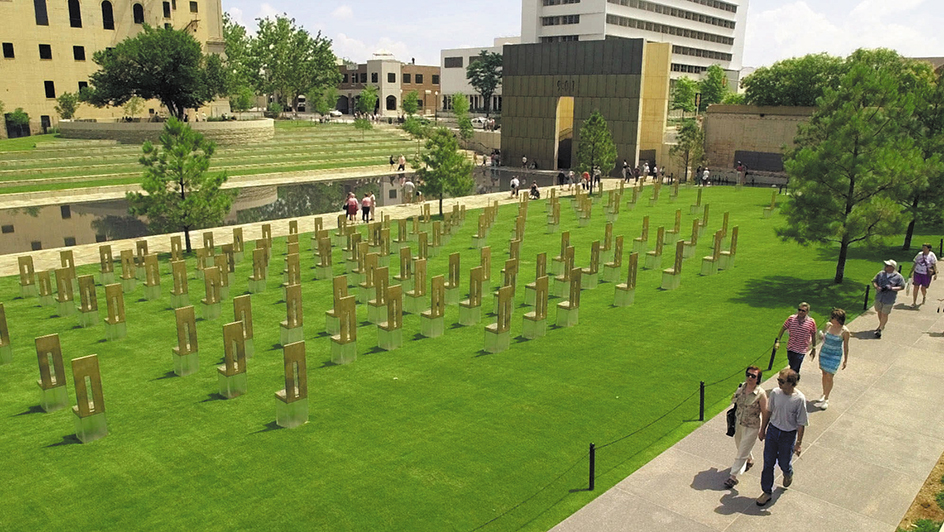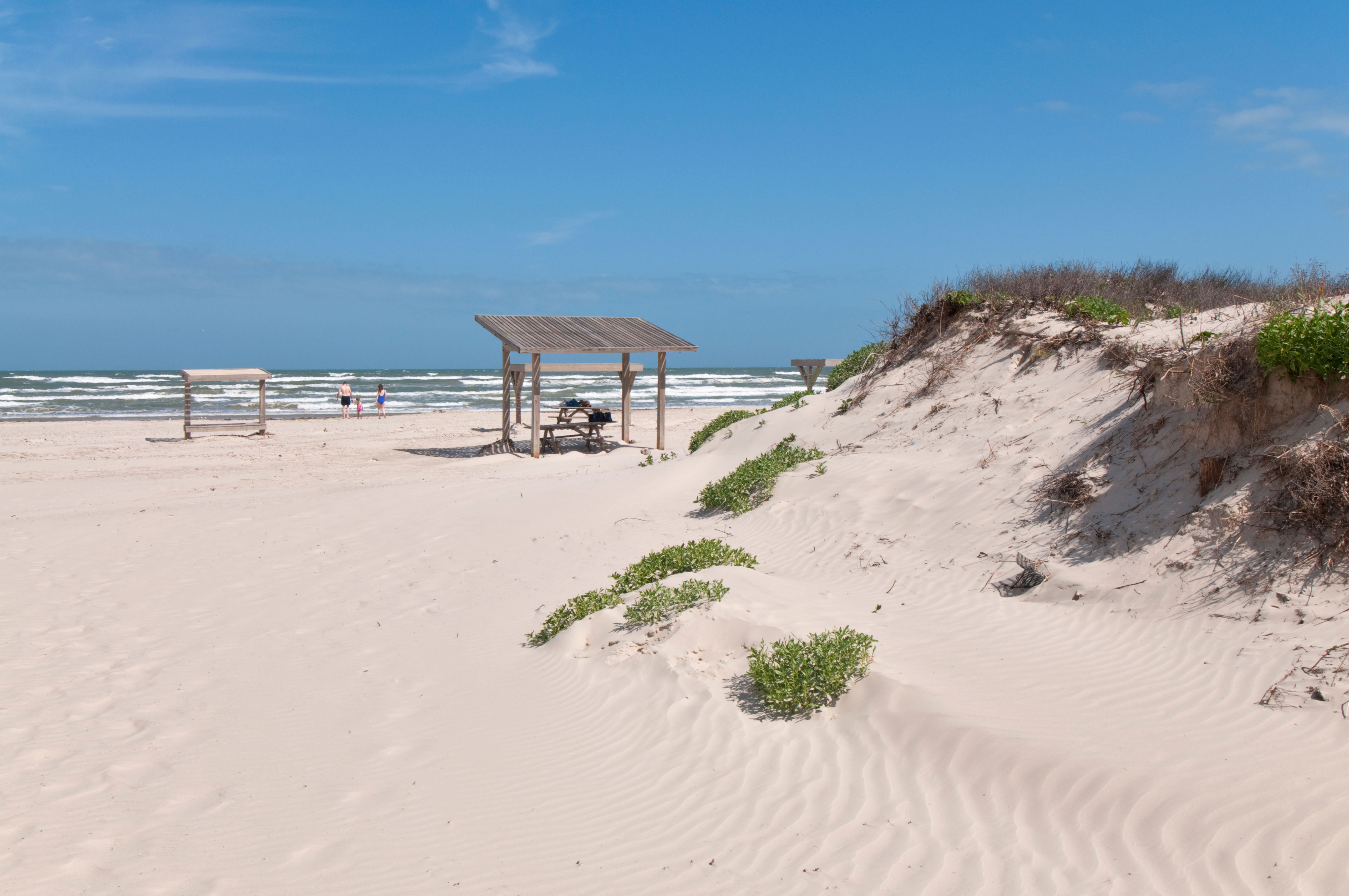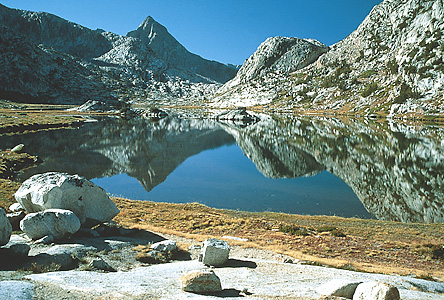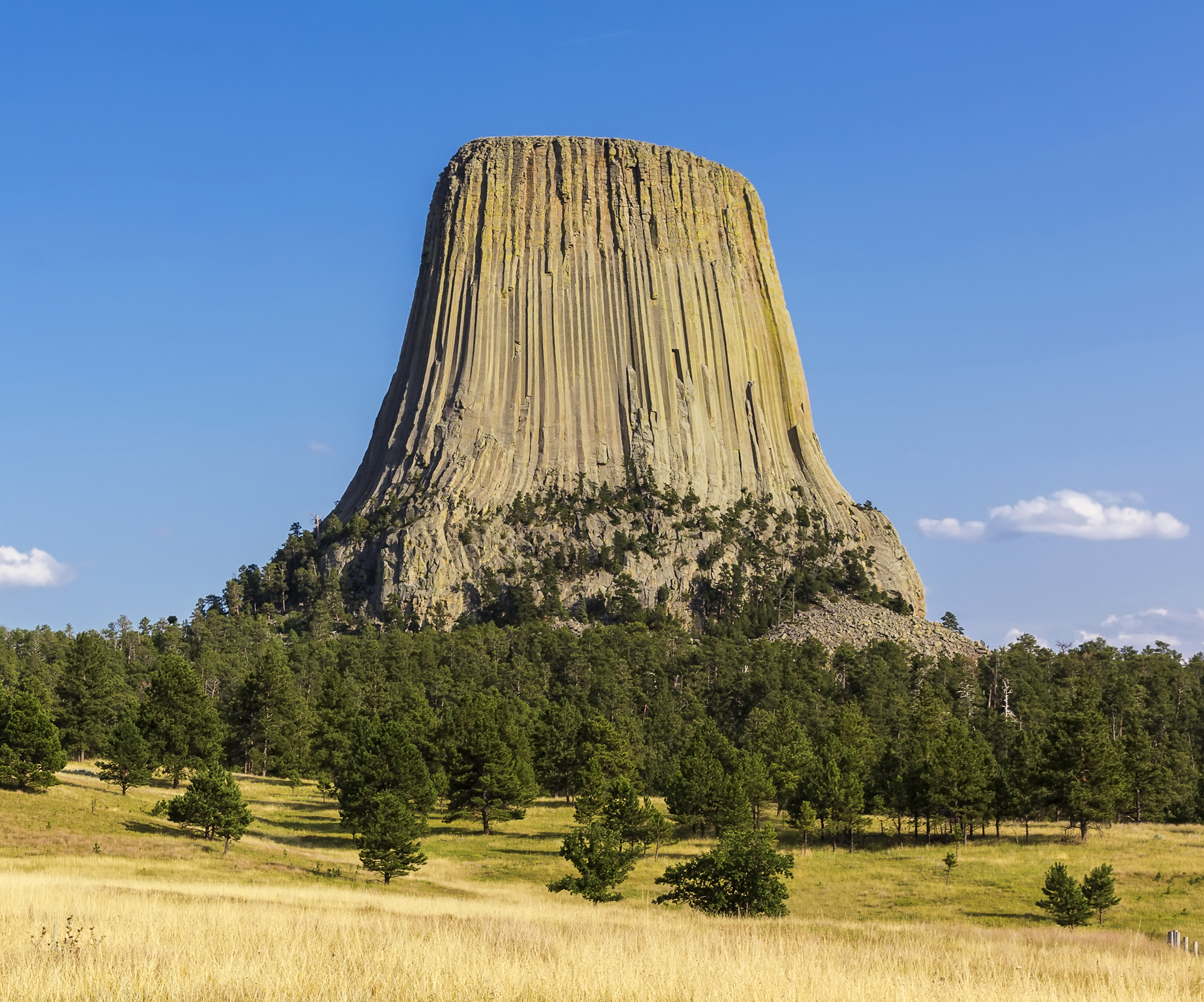National Park System consists of hundreds of areas in the United States that have been set aside for the benefit and enjoyment of the people. These areas, called parklands, are natural wonderlands, famous historic places, or sites for many kinds of outdoor recreation. They include national parks, monuments, battlefields, lakeshores, rivers, and historic buildings.
The nation’s parklands range in size from millions of acres (or hectares) to a fraction of an acre (or hectare). The largest parkland in the United States is Wrangell-St. Elias National Park in Alaska. This park, which features many glaciers and high peaks, covers more than 8 million acres (3 million hectares). The smallest area in the National Park System is the Thaddeus Kosciuszko National Memorial in Philadelphia, a red brick building that occupies 1/50 of an acre (.008 hectare). The building was briefly the home of Kosciuszko, a Polish patriot who fought in the American Revolution (1775-1783).

The United States government established the first national park in the world, Yellowstone National Park, in 1872. The National Park System developed with the creation of additional parklands. Today, the District of Columbia and every state except Delaware have at least one national parkland. The outlying U.S. regions American Samoa, Guam, Puerto Rico, and the Virgin Islands also have national parklands.
The National Park Service, a bureau of the U.S. Department of the Interior, manages nearly all the parklands. The president of the United States appoints a director to head the Park Service. The director names a superintendent to manage an individual area or a group of areas close together. Park rangers work to protect the parklands from damage and provide various services for visitors (see National Park Service ). See also the articles on the various parklands listed in the tables with this article. For information on national parks throughout the world, see the World Book article National park .
Kinds of parklands
There are about 20 different types of areas in the National Park System, including national parks, national monuments, national memorials, and national historic sites. See the table of Types of areas.
The different types of areas in the National Park System are preserved for three basic reasons. Areas may have (1) beautiful or unusual natural features, (2) historical importance, or (3) attractive recreational features. Many areas are set aside for more than one reason.
Areas preserved for natural features.
Most national parks are preserved chiefly for the outstanding beauty or scientific importance of their natural features. For example, Yellowstone National Park, which covers parts of Idaho, Montana, and Wyoming, is world famous for its natural wonders. They include hot geysers that erupt from the ground, thundering waterfalls that plunge into deep gorges, and sparkling lakes that lie high among snow-capped mountains. Death Valley National Park, partly in Nevada and partly in California, is preserved for its strange and beautiful rock formations. It has the lowest land surface in the Western Hemisphere—282 feet (86 meters) below sea level.
Many national monuments are preserved for unusual features. Among these are Agate Fossil Beds National Monument in Nebraska, which has deposits of ancient animal fossils, and Craters of the Moon National Monument in Idaho, which features lava fields with volcanic caves, cinder cones, craters, and tunnels.
Areas preserved for historical importance
include ancient ruins, such as the remains at Georgia’s Ocmulgee Mounds National Historical Park of Native American mounds and towns, some dating from 8000 B.C. Other areas honor important people or events in the history of the United States. These areas include battlefields, forts, and other military sites, and historic bridges, buildings, dams, canals, and farms. The homes of many U.S. presidents and other noted Americans are among the national historic sites. The most famous historical area is probably the White House, in Washington, D.C.

The historical areas look much as they did when they became important. Staff members sometimes restore buildings and natural features, raise animals on the farms, and wear clothing styles from the past.
Areas preserved for recreational use.
National recreation areas, national seashores, and national lakeshores provide land and water resources for outdoor activities. For example, 68 miles (109 kilometers) of white sand beaches and dunes line the Gulf of Mexico at Padre Island National Seashore in Texas. The area’s fishing, horseback riding, sailing, and swimming attract visitors from all parts of the country.

In other areas of the National Park System, such features as roads, trails, and water reservoirs have been developed to provide recreational opportunities. For example, one of the world’s largest artificially created lakes, 250-square-mile (650-square-kilometer) Lake Mead, is a popular playground for water sports. Formed by Hoover Dam, the lake is part of the Lake Mead National Recreation Area, which lies partly in Arizona and partly in Nevada.
The park system also has cultural areas that provide attractive settings for fine arts performances. One such area is the Wolf Trap National Park for the Performing Arts in northeastern Virginia, which presents concerts and other fine arts programs in its auditorium. Lawns around the auditorium provide seating space for thousands of additional people.
Visiting the parklands
Hundreds of millions of people visit the parklands in the National Park System each year. Many parklands offer free admission. Some areas allow camping or have lodgings for overnight stays.
Planning a visit.
Learning about a parkland beforehand will increase the enjoyment of a visit. It is helpful to know what natural or historical features to look for and why they are important. For an overnight stay, visitors should find out whether the area has lodgings or campgrounds that will be open. It is also useful to know about available services and recreational activities, traveling routes, and various fees.
The tables with this article show which parklands have overnight lodgings, permit camping, are closed part of the year, or are not yet open to the public. The National Park Service provides additional information through its website at http://www.nps.gov to help plan a park visit.
Visitors should stop at a parkland’s visitor center for pamphlets and maps that tell about the area’s features and activities. At many parklands, staff members offer campfire talks, guided trips, and amphitheater programs.
Visitors’ costs.
About two-thirds of the parklands are free to the public. The others charge a daily entrance fee. People younger than 16 and organized groups of high school age pay no entrance fee.
The U.S. government sells passes that may be used for a year at all parklands and certain other U.S. recreational lands that charge an entrance fee. People 62 or older may obtain an inexpensive lifetime pass. People with permanent disabilities may obtain a free lifetime pass. People who perform at least 500 hours of volunteer service for the Park Service or for other agencies that maintain federal lands may obtain a free one-year pass.
Overnight lodgings vary in price, according to quality. They include cabins, cottages, lodges, motels, hotels, and trailer villages. These lodgings, available in dozens of areas, are operated privately under contract with the National Park Service. Visitors should make reservations early. The busiest periods, except in warm climates, are from late May to mid-October, and weekends and holidays the rest of the year.
Camping
is permitted in about 100 national parklands—in the wilderness or on campgrounds. A wilderness site may be a great distance from such conveniences as drinking water and food supplies. Wilderness campers must notify the superintendent or a park ranger of their plans. Back-country camping opportunities are available in more than 100 parks.
Inexperienced campers should camp on campgrounds. Some of these sites have few conveniences, and others have many, including play areas for children. Some campgrounds are designed for individuals or for families or other small groups. Other sites are intended for large, organized groups, such as school groups. Reservations can be made for group sites. Commercial reservation service is available for a few popular campgrounds. For camping tips, see the Camping article.
Visitors’ responsibilities.
Visitors share with park rangers the responsibility of protecting the parklands. Carelessness can start a forest fire that could destroy lives and valuable resources. Visitors are not allowed to remove or damage any natural feature—not even a flower. The National Park Service repeatedly warns the public not to feed, tease, or touch any animals of the parklands.
Preserving the parklands
Limits on activities.
To keep the parklands in an unspoiled condition, the National Park Service strives to disturb the plant and animal life as little as possible. The Park Service allows fishing, but hunting, lumbering, and mining are prohibited in most areas. Livestock grazing is limited and is steadily being eliminated. In most areas, water resources may not be used for such purposes as irrigation or the production of hydroelectric power.
The National Park Service encourages recreational activities in the parklands if they do not disturb the surroundings. The service tries to teach people about the natural processes that have made the land of each area what it is. Park rangers and other staff members are trained to explain natural and scientific features to visitors. The service also encourages research and educational activities in all the nation’s parklands.
Fires
are an essential process in many natural areas, including forests and prairies. For this reason, the Park Service permits fires started by lightning to burn in certain parks, as long as the flames do not threaten human lives, buildings, or rare resources. But the Park Service fights any fire started by people, such as careless campers or smokers.
Crowds.
The ever-increasing number of visitors puts pressure on the national parklands. Problems include demands for such basic services as food, water, lodging, and transportation. Only through careful planning and management can these problems be handled without spoiling the parklands. Otherwise, overcrowding could result in too much automobile traffic, air pollution from automobile fumes and campfire smoke, dirty streams, and jammed campgrounds.
The National Park Service has taken many steps to correct early mistakes in parkland development. It has tightened controls on air and water pollution, food supplies, and health care. In Yosemite National Park, for example, public transportation was begun to reduce automobile traffic. The Park Service also cut the number of campers permitted in overcrowded Yosemite Valley.
Establishing new parklands
National parks can be created only through acts of the U.S. Congress. Congress must also approve nearly all other new areas for the National Park System. The president may establish a national monument if the government owns the land. The secretary of the interior may approve a national historic site.
Congressional committees usually hold hearings about adding particular lands to the park system. The secretary of the interior makes recommendations based on a study of an area’s significance conducted by Park Service personnel.
The National Park Service acquires new land through donations, exchanges, purchases, or reassignment of federal properties. Many parklands in the system include some land that the government does not own. The government is gradually acquiring these sections. Dozens of areas are owned by state, local, or private agencies. The National Park Service may contribute funds or provide technical advice and assistance to the agencies that manage these areas.
History
During the 1800’s, hunters and trappers returned from the Yellowstone region with reports of strange natural wonders. These stories—of hot springs, spurting geysers, and a mountain of black glass—seemed unbelievable. In 1870, an expedition led by General Henry D. Washburn, surveyor general of the Montana Territory, visited the region to check the reports.
After exploring by horseback, the men camped near the Madison River. They talked about the sights they had seen and discussed developing the land for resorts, or for lumbering and mining. Then, Cornelius Hedges, a Montana judge, proposed that the region be preserved as a national park to benefit all people for all time. The other men agreed enthusiastically.
Members of the expedition promoted the national park idea by writing articles in newspapers and magazines, giving lectures, and meeting with high government officials. Their efforts succeeded in 1872, when Congress established Yellowstone National Park, the world’s first national park. During the 1890’s, four more national parks were established—General Grant (now Kings Canyon), Sequoia, and Yosemite in California, and Mount Rainier in Washington.

In 1906, Congress passed the Antiquities Act to stop looting and destruction at prehistoric American Indian sites in the Southwest. This law gave the president the power to establish national monuments on land owned or controlled by the government. Later in 1906, Devils Tower National Monument in Wyoming became the first such area. More than 30 national monuments were established during the next 10 years.

In 1916, Congress set up the National Park Service as a bureau of the Department of the Interior. Stephen T. Mather, a Chicago businessman, became its first director. Mather did much to promote and expand the National Park System. In 1916, there were 16 national parks and 21 national monuments, with a total area of nearly 5 million acres (2 million hectares). When Mather retired in 1929, the system consisted of 25 national parks, 32 national monuments, and a national memorial. It had a total area of about 10 million acres (4 million hectares).
In 1933, Congress transferred more than 50 areas from other government agencies to the Department of the Interior. These areas, most of them historical, were added to the National Park System. In 1935, the Historic Sites Act gave the secretary of the interior the power to approve national historic sites.
The Park, Parkway, and Recreation Area Study Act of 1936 led to establishment of recreational areas in the National Park System. The first such area, the Blue Ridge Parkway, was established later that year. An act of 1946 allowed the Park Service to manage recreational areas under cooperative agreements with other government agencies that controlled the areas.
In the last half of the 1900’s, much land was added to the National Park System. By the early 2020’s, the system had grown to include about 420 areas and totaled more than 85 million acres (34 million hectares).
